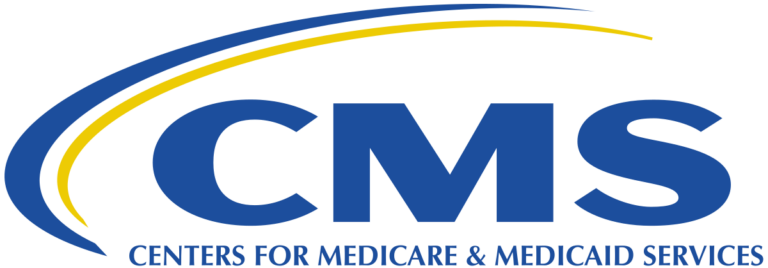MIPS 2: Getting Started With MIPS

MIPS Eligibility Criteria for Physical Therapy Clinic Owners
If you didn’t already read article 1, please click here to read it first. This is article 2 of 10 about Getting Started With MIPS in Physical Therapy
In the ever-changing landscape of healthcare, it is crucial for physical therapy clinic owners to stay abreast of the latest regulations and requirements. One such requirement that has gained significant importance in recent years is the Merit-based Incentive Payment System (MIPS). Designed to improve the quality of care provided to Medicare beneficiaries, MIPS is a performance-based payment program that offers financial incentives to eligible clinicians.
Understanding the MIPS eligibility criteria is essential for physical therapy clinic owners to ensure their participation in the program. To qualify for MIPS, clinic owners must meet specific criteria set by the Centers for Medicare and Medicaid Services (CMS). These criteria include:
1. Medicare Enrollment: To be eligible for MIPS, clinic owners must be enrolled in Medicare as a provider. This means they must have a valid National Provider Identifier (NPI) and be actively billing Medicare for services. If you don’t already have an NPI, you can get one here.
2. Threshold Determination: Clinic owners must exceed a certain threshold in terms of patient volume and Medicare billing. The exact threshold may vary from year to year, so it is crucial to keep track of the latest updates from CMS.
3. Performance Category Requirements: MIPS measures performance across four categories: Quality, Promoting Interoperability, Improvement Activities, and Cost. Clinic owners must meet the minimum requirements in each category to be eligible for MIPS.
4. Reporting Period: Clinic owners must report their performance data for a specified period, usually a full calendar year. It is important to gather and report accurate data to maximize reimbursement and avoid penalties.
5. MIPS Participation Options: Clinic owners have the option to participate in MIPS as an individual or as part of a group. The decision depends on factors such as the number of eligible clinicians and practice size.
By meeting these eligibility criteria, physical therapy clinic owners can participate in MIPS and take advantage of the financial incentives offered by the program. However, it is important to note that MIPS is a complex program with various reporting requirements and performance measures. Clinic owners should consider seeking professional guidance or consulting with experts who specialize in MIPS for physical therapy clinics.
In conclusion, understanding the MIPS eligibility criteria is crucial for physical therapy clinic owners who wish to participate in the program. By meeting the requirements set by CMS and reporting accurate performance data, clinic owners can maximize their reimbursement and improve the quality of care provided to Medicare beneficiaries.
MIPS Reporting Options for Physical Therapy Clinics
As a physical therapy clinic owner, you understand the importance of providing high-quality care to your patients. But did you know that you can also be rewarded for your commitment to excellence through the Merit-based Incentive Payment System (MIPS)? In this subchapter, we will explore the various MIPS reporting options available for physical therapy clinics.
MIPS is a program developed by the Centers for Medicare and Medicaid Services (CMS) to promote value-based care and improve healthcare outcomes. It allows eligible clinicians, including physical therapists, to earn incentives and avoid penalties based on their performance in four categories: Quality, Cost, Promoting Interoperability, and Improvement Activities.
When it comes to reporting MIPS data, physical therapy clinics have multiple options to choose from. One popular option is claims-based reporting. With this method, you report your MIPS data through your Medicare Part B claims. This option is relatively straightforward and requires minimal additional effort on your part. However, it is important to ensure that your claims accurately reflect the quality of care provided to your patients.
Another option is registry reporting. A registry is a specialized reporting system that collects and submits MIPS data on behalf of eligible clinicians. By using a registry, physical therapy clinics can streamline their reporting process and access comprehensive data analytics to identify areas for improvement. This option is particularly beneficial if your clinic treats a large number of Medicare patients or if you want to gain valuable insights into your performance.
Alternatively, physical therapy clinics can choose to report through a qualified clinical data registry (QCDR). A QCDR is a specialized registry that focuses on a specific clinical specialty, such as physical therapy. By reporting through a QCDR, you can track and report on MIPS measures that are directly relevant to your practice and specialty. This option allows for more targeted reporting and can help you demonstrate your expertise in delivering high-quality care.
Lastly, physical therapy clinics can opt for electronic health record (EHR) reporting. If your clinic uses an EHR system, you can submit your MIPS data directly through your EHR vendor. This option offers seamless integration with your existing workflow and eliminates the need for manual data entry. However, it is crucial to ensure that your EHR system is certified for MIPS reporting and can accurately capture the required data elements.
In conclusion, physical therapy clinics have several MIPS reporting options to choose from. Whether you prefer claims-based reporting, registry reporting, QCDR reporting, or EHR reporting, it is essential to select the option that aligns with your clinic’s goals and resources. By participating in MIPS and reporting your performance accurately, you can not only improve the quality of care provided to your patients but also maximize your reimbursement potential.
MIPS Performance Categories Overview
In the ever-evolving landscape of healthcare, it is crucial for physical therapy clinic owners to stay informed about the latest developments in Medicare payment programs. One such program that directly affects physical therapy clinics is the Merit-based Incentive Payment System (MIPS). Understanding the MIPS performance categories is essential for clinic owners to optimize their reimbursement and ensure they are providing high-quality care to their patients.
The MIPS program was designed to promote value-based care by incentivizing healthcare providers to deliver efficient, high-quality services. MIPS for physical therapy clinics comprises four performance categories that collectively evaluate clinicians’ performance and determine their payment adjustments. These categories are Quality, Promoting Interoperability, Improvement Activities, and Cost.
The Quality category measures the effectiveness of patient care provided by physical therapy clinics. It evaluates various aspects, such as patient outcomes, patient safety, care coordination, and patient experience. Clinic owners should focus on selecting and reporting quality measures that align with their practice objectives and demonstrate their commitment to delivering exceptional care.
Promoting Interoperability emphasizes the use of certified electronic health records (EHR) technology to improve patient outcomes. This category encourages physical therapy clinics to utilize EHR systems effectively, exchange health information securely, and engage patients in their care through various electronic means. Clinic owners should explore the functionalities and benefits of EHR systems to maximize their performance in this category.
The Improvement Activities category recognizes efforts made by physical therapy clinics to enhance patient care and operational processes. These activities can range from implementing care coordination practices to conducting regular quality improvement meetings. Clinic owners should identify improvement activities that are relevant to their practice and align with their goals for providing comprehensive care to their patients.
Cost measures the total cost of care provided by physical therapy clinics over a specified period. It evaluates the use of resources and the efficiency of care delivery. By optimizing resource utilization and implementing cost-effective strategies, clinic owners can positively impact their performance in this category.
Understanding the MIPS performance categories is vital for physical therapy clinic owners to effectively participate in the program and maximize their potential reimbursement. By focusing on delivering high-quality care, utilizing EHR technology, engaging in improvement activities, and optimizing resource utilization, clinic owners can ensure their clinic’s success in the ever-changing landscape of healthcare reimbursement.
2023 MIPS Changes
An Overview of 2023 MIPS Changes
As a physical therapy clinic owner, it is crucial to stay updated on the latest changes in the Merit-based Incentive Payment System (MIPS) to ensure your clinic is compliant and can maximize its reimbursement potential. In this subchapter, we will provide you with an overview of the significant changes coming to MIPS in 2023 and how they specifically impact physical therapy clinics.
One of the most notable changes in the 2023 MIPS program is the introduction of new quality measures and reporting requirements. CMS has revised the existing measures and introduced new ones that are more aligned with the unique needs and challenges faced by physical therapy clinics. For example, there will be an increased focus on patient-reported outcome measures (PROMs), allowing you to demonstrate the effectiveness of your interventions and patient satisfaction.
In addition to the quality measures, the 2023 MIPS program also places greater emphasis on interoperability and the use of electronic health records (EHRs). To comply with these changes, physical therapy clinics will need to ensure their EHR systems are capable of securely exchanging patient data with other healthcare providers. This will enable seamless coordination of care and improve patient outcomes.
Another significant change in 2023 is the introduction of the Cost performance category. While previously only accounting for 10% of the final MIPS score, it will now contribute 20%. This means that physical therapy clinics will need to carefully monitor their costs and identify areas where they can improve efficiency without compromising patient care. Implementing strategies to reduce unnecessary tests, procedures, or referrals can positively impact your clinic’s performance in this category.
Furthermore, CMS has also revised the Promoting Interoperability (PI) category in MIPS, which focuses on the use of technology to enhance patient engagement and health information exchange. Physical therapy clinics will need to ensure they meet the requirements for this category, such as providing patients with access to their health information electronically and using secure messaging to communicate with patients.
In conclusion, the 2023 MIPS changes present both challenges and opportunities for physical therapy clinics. By familiarizing yourself with the new quality measures, focusing on interoperability and EHR capabilities, managing costs effectively, and meeting the requirements of the PI category, you can position your clinic for success in the MIPS program. Stay tuned for the following chapters in “Mastering MIPS: A Complete Guide for Physical Therapy Clinic Owners” where we will delve deeper into each of these changes and provide practical tips on how to navigate them effectively.
Reporting Deadlines for the 2023 Calendar Year
As a physical therapy clinic owner, understanding the reporting deadlines for the Merit-based Incentive Payment System (MIPS) is crucial to ensure compliance and maximize your reimbursement potential. The 2023 calendar year brings new opportunities and challenges, and staying on top of the reporting requirements is essential for the success of your clinic.
The reporting period for MIPS in 2023 starts on January 1st and ends on December 31st. During this time, you will need to gather and report data on various quality measures, improvement activities, and promoting interoperability measures. By meeting these requirements, you can earn incentives and avoid penalties while demonstrating the quality of care provided by your clinic.
To successfully navigate the reporting process, it is essential to be aware of the different deadlines throughout the year. Here are some key reporting deadlines for the 2023 calendar year that you should mark on your calendar:
1. Data Collection Period: January 1st – December 31st, 2023
This is the period during which you should collect data for the quality measures, improvement activities, and promoting interoperability measures. It is crucial to ensure accurate and complete data collection throughout the year, as it will directly impact your MIPS score.
2. Submission Deadline: March 31st, 2024
By this date, you must submit your MIPS data to the Centers for Medicare & Medicaid Services (CMS). It is recommended to submit your data well before the deadline to allow for any unforeseen issues or delays.
3. Payment Adjustment Year: 2025
The payment adjustment year is when the MIPS scores earned in 2023 will impact your Medicare reimbursement rates. Depending on your performance, you may receive a positive payment adjustment, a neutral adjustment, or a negative adjustment.
To ensure a smooth reporting process, consider implementing an electronic health record (EHR) system that can facilitate data collection and reporting. This will help streamline the process and reduce the chances of errors or missing data.
Additionally, staying informed about changes and updates to the MIPS program is crucial. CMS regularly releases updates and guidance documents, so make sure to regularly check their website and subscribe to their newsletters to stay up to date with any changes that may affect your reporting requirements.
By mastering the reporting deadlines for the 2023 calendar year, you can effectively participate in the MIPS program and maximize your clinic’s reimbursement potential. Stay organized, collect accurate data, and submit your information on time to ensure compliance and success in the MIPS program.
Making Sure You’re Ready for 2024
As a Physical Therapy Clinic Owner, it is crucial to stay up to date with the latest developments in the healthcare industry. One such development that you need to be aware of is the Merit-based Incentive Payment System (MIPS). MIPS is a program that aims to improve healthcare quality and value through the implementation of performance-based payment adjustments. In this subchapter, we will discuss the steps you need to take to ensure that your physical therapy clinic is ready for MIPS in 2024.
The first step in preparing for MIPS is to understand the program’s requirements and how they apply to physical therapy clinics. Familiarize yourself with the MIPS performance categories, which include Quality, Promoting Interoperability, Improvement Activities, and Cost. Determine which measures are relevant to your clinic and how you can optimize your performance in each category.
Next, assess your clinic’s current capabilities and resources. Do you have the necessary technology infrastructure to collect and report data required for MIPS? If not, consider investing in an electronic health record (EHR) system that is certified for MIPS reporting. This will streamline the process and ensure accurate and timely data submission.
Another important aspect of MIPS readiness is staff education and training. Make sure your physical therapy clinicians and administrative staff are aware of the MIPS program and its requirements. Provide them with the necessary training to ensure accurate and consistent data collection and reporting. Encourage a culture of continuous quality improvement within your clinic, as this will be beneficial in meeting MIPS performance goals.
Furthermore, establish a system for regular monitoring and feedback on your clinic’s MIPS performance. Develop a dashboard that tracks your progress in each performance category and provides real-time feedback to clinicians and staff. This will allow you to identify areas that need improvement and take proactive measures to address them.
Lastly, stay informed about updates and changes to the MIPS program. The Centers for Medicare and Medicaid Services (CMS) regularly release guidelines and resources to help clinics navigate MIPS successfully. Subscribe to newsletters and attend webinars to stay abreast of the latest developments in the program.
In conclusion, being prepared for MIPS in 2024 is crucial for physical therapy clinic owners. By understanding the requirements, assessing your clinic’s capabilities, educating your staff, establishing a monitoring system, and staying informed, you can ensure that your clinic is ready to participate in MIPS and maximize your potential for incentives. Don’t wait until the last minute – start preparing now to stay ahead of the game and provide the best possible care to your patients while achieving financial success.





